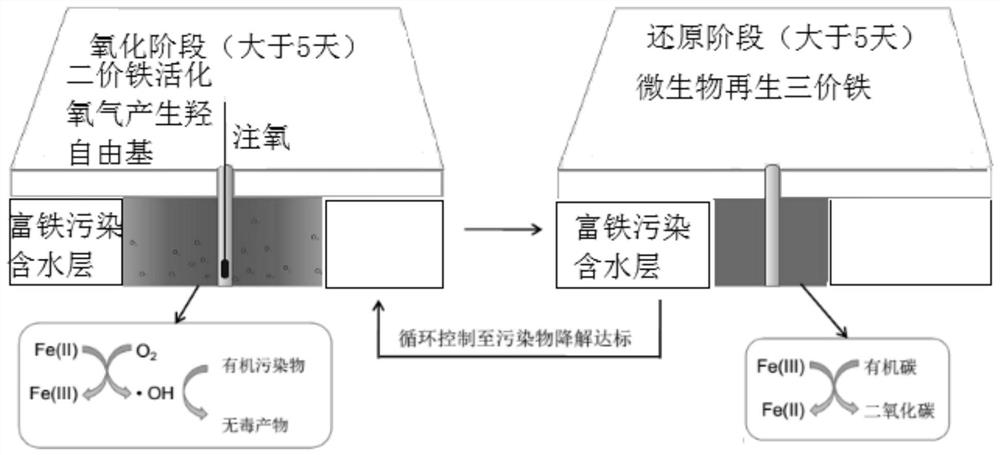An in-situ remediation process of low-concentration organic-contaminated groundwater and its application
A technology of organic pollution and in-situ remediation, applied in the direction of contaminated groundwater/leachate treatment, water pollutants, water/sewage treatment, etc., can solve the problems of treatment compliance, difficulty, single treatment principle, etc., and achieve mild treatment conditions , low processing cost, good processing effect
- Summary
- Abstract
- Description
- Claims
- Application Information
AI Technical Summary
Problems solved by technology
Method used
Image
Examples
Embodiment Construction
[0022]In order to make the objectives, technical solutions, and advantages of the present invention clearer, the following further describes the embodiments of the present invention with reference to the accompanying drawings.
[0023]The embodiment of the present invention provides an in-situ remediation process for low-concentration organic polluted groundwater, including the following steps:
[0024]S1. Construct injection wells in the groundwater contaminated area. The number of injection wells is determined according to the size of the contaminated area. The service radius of a single injection well is 1-8 meters, and the diameter is 20-150mm. The depth of the well is greater than the depth of groundwater that needs to be repaired. A well pipe is installed in the injection well. The diameter of the well pipe is 10-100mm. The bottom of the well pipe is perforated and communicated with the aquifer to facilitate the injection of air, oxygen or other chemicals into the aquifer. The lengt...
PUM
| Property | Measurement | Unit |
|---|---|---|
| radius | aaaaa | aaaaa |
| diameter | aaaaa | aaaaa |
| diameter | aaaaa | aaaaa |
Abstract
Description
Claims
Application Information
 Login to View More
Login to View More - R&D
- Intellectual Property
- Life Sciences
- Materials
- Tech Scout
- Unparalleled Data Quality
- Higher Quality Content
- 60% Fewer Hallucinations
Browse by: Latest US Patents, China's latest patents, Technical Efficacy Thesaurus, Application Domain, Technology Topic, Popular Technical Reports.
© 2025 PatSnap. All rights reserved.Legal|Privacy policy|Modern Slavery Act Transparency Statement|Sitemap|About US| Contact US: help@patsnap.com

